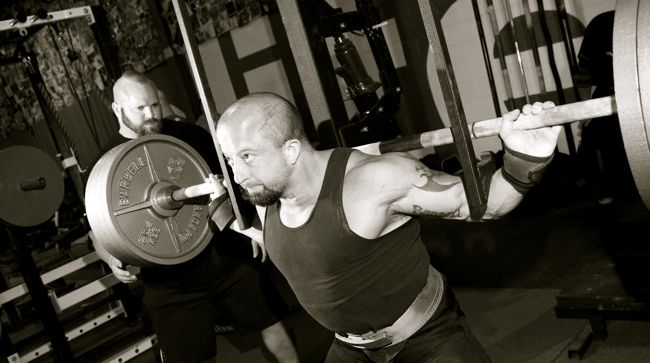
This is why I stopped performing dynamic effort work in my training...
For the first eight or nine years of my 15 year powerlifting career, I followed a typical bodybuilding routine. I trained chest on Monday, biceps on Tuesday, quads on Wednesday, shoulders and triceps on Thursday, and back and hamstrings on Friday. I primarily trained alone at the YMCA where I worked. I focused on the main lifts when I benched on Monday, squatted on Wednesday and deadlifted on Friday. The routine worked well, enabling me to climb to the number one spot on Powerlifting USA’s top 100 list, but eventually my gains stalled.
I knew that I needed a change, so I began doing research, which is when I discovered the conjugate method. It was then that I began incorporating dynamic effort work and my training schedule changed to dynamic effort squats on Monday, dynamic effort bench on Tuesday, my own assistance day on Wednesday, max effort squats on Friday and max effort bench on Saturday. This took me to the next level allowing me to train the squat and bench twice a week, while increasing my explosive power, as well as giving me a day to train with lighter weights, which helped with recovery. This method of training seemed to work for many years, but eventually my gains stalled once again.
I began to notice less and less carryover from my speed work to my competition lifts. This coupled with the detrimental effect that the speed work and the ballistic benching had on my joints, convinced me that the risks outweighed the benefits. Another factor that I feel diminishes the importance of speed work is the progression of multiply gear. In order for me to perform optimally equipped, I had to change my technique, and the result is that my geared technique has become very different from my raw. Several important questions that I must constantly ask myself are, “Why should I utilize a particular movement in my training? How does it benefit me, and is it worth the risk to continue to perform it?” My primary goal is to raise my total, so I constantly evaluate training protocols and eliminate ineffective exercises.
I analyzed what was lacking in my training and knew that I was focusing too much on equipped training without enough raw work. I also realized that although the dynamic effort training gave me a chance to train with lower percentages to recover, I wasn’t getting any faster. It was then that I devised what has become my ideal routine. I combined the conjugate method with periodization, while incorporating accommodating resistance. I now perform ME deadlifts with raw squats on Monday, raw bench for reps on Tuesday, Accessory work on Wednesday, ME squats on Friday and ME bench on Saturday. This routine has allowed for me to make continued improvements with lower risk of overtraining and injury. It’s also allowing for me to increase both my raw and equipped strength without neglecting any weaknesses.
For further explanation of my training methods, please check out my training log.









